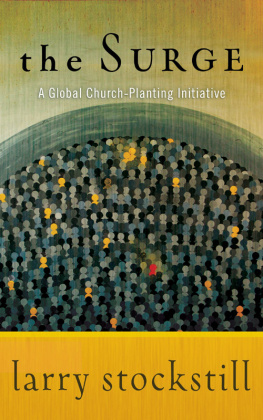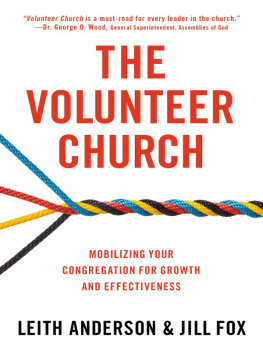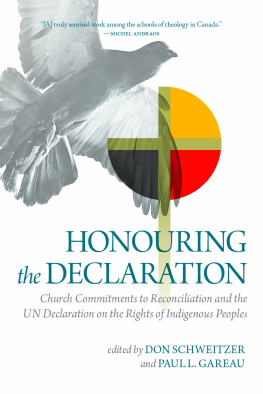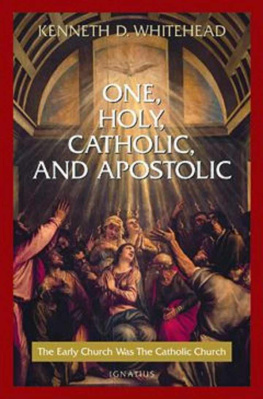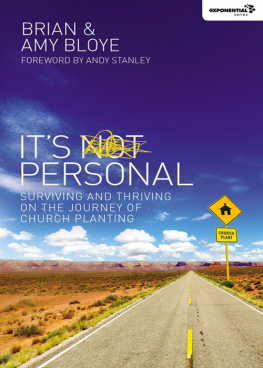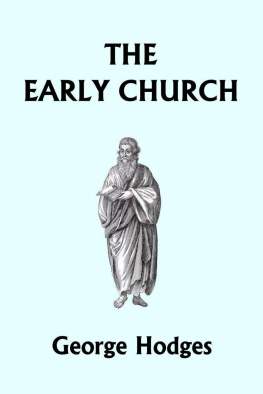Revised Edition
THE INDIGENOUS CHURCH
INCLUDING
The Indigenous Church and the Missionary
MELVIN L. HODGES
Foreword byL. John Bueno

Gospel Publishing House
Springfield, Missouri
02-0528
All Scripture quotations, unless otherwise indicated, are taken from the HOLY BIBLE, NEW INTERNATIONAL VERSION. NIV. Copyright 1973, 1978, 1984 by International Bible Society. Used by permission of Zondervan. All rights reserved.
Scripture quotations marked (NASB) are taken from the New American Standard Bible, Copyright 1960, 1962, 1963, 1968, 1971, 1972, 1973, 1975, 1977, 1995 by The Lockman Foundation. Used by permission. (www.Lockman.org)
Scripture quotations marked (KJV) are taken from the King James Version of the Bible.
The Indigenous Church 1953, 1971, 1976 by Gospel Publishing House, 1445 N. Boonville Ave., Springfield, MO 65802.
The original appendices from The Indigenous Church were not included in this edition. Because of its historical significance the appendices have been made available on the Flower Pentecostal Heritage Centers Web site:
http://www.ifphc.org/hodges
The Indigenous Church and the Missionary 1978 by Melvin L. Hodges was published by the William Carey Library.
Both The Indigenous Church and The Indigenous Church and the Missionary have been significantly revised for the contemporary student of missionary indigenous principles. It is hoped that this new edition will make Melvin Hodges important work accessible to these students.
2009 by Gospel Publishing House, 1445 N. Boonville Ave., Springfield, MO 65802. All rights reserved. No part of this book may be reproduced, stored in a retrieval system, or transmitted in any form or by any meanselectronic, mechanical, photocopy, recording, or otherwisewithout prior written permission of the copyright owner, except brief quotations used in conjunction with reviews in magazines or newspapers.
ISBN 978-0-88243-810-8
Contents
I had the privilege of working firsthand with Melvin Hodges, one of the great missionary heroes of the Assemblies of God. He was not only my regional director when I first went to the field, but he also became my friend. I was privileged to be with him in retreats and seminars and hear what was on his heart. Through these experiences, I sensed the great wisdom God had given him as it relates to the indigenous church. Over the years I saw the fruit of his efforts in the lives of those he mentored.
As a missionary to El Salvador, Brother Hodges first put the indigenous church concept into practice. While many of the principles he used were not original with him, he was the one who incorporated them in the real world. The leaders who came under his tutelage during this era were men I greatly admired when I was starting out as a missionary.
In those early years, missionaries and national pastors in El Salvador exemplified teamwork. They literally walked, ate, and slept with one goal in mindto prepare workers who would extend the church to unreached areas. They were totally absorbed in their mission and poured into others the great virtues of Scripture and correct missiological thinking. They were great men in their own right and helped lead their nation into the strong church that developed over the years. Today some statistics claim that as much as 30 percent of El Salvadors population is born again.
To witness indigenous church principles lived out and developed down through the years has been a distinct thrill. When I served as regional director for Latin America and the Caribbeana position Brother Hodges once occupiedI saw the influence these teachings had, not just in one country but throughout the entire region. In countries where the principles were accepted, the church showed great growth, strength, and leadership. In the places where believers tried to bypass their application, the church was weak and ineffective.
Laying a foundation in correlation with the three selfs of the indigenous church principles has required years of hard work and prayer. Yet now the benefit of such effort is clear. Latin America in many cases is an example of what can happen when these principles are put into place. While other factors undoubtedly contributed to the revival we see there today, I believe that the practice of indigenous church principles is a major factor in the development of strong churches throughout the region.
As executive director of World Missions, I have observed this same phenomenon worldwide. The influence of Brother Hodges and others, such as Morris Williams, former regional director for Africa, and the partnership principles he developed have confirmed the wisdom of the basic missiology of indigenization. Throughout the world, churches are developed and strong because of these basic principles, and their leaders are willing to take responsibility for their own people with an attitude of strength and maturity.
I will always treasure the moments I spent with Brother Hodges and the great leaders he trained in the early years of his ministry. I have seen the wisdom of his teaching and his devotion to the Master. He was a true servant of the Master and reflected a godly spirit in everything he did. He did more than talk about his relationship with God; he gave us an example to follow. Watching the fruit of his ministry made me a true believer in the indigenous church.
L. John Bueno
Executive Director
Assemblies of God World Missions
Melvin Hodges legacy and impact on missions is best understood in the context of Assemblies of God (AG) missions history and the task still before us.
After ninety-four years of AG missions, more than sixty million believers worship in more than three hundred thousand congregations in 212 countries and territories. But this represents just over 1 percent of the worlds vast, unreached multitudes. When we consider the challenging task of reaching our world, how can we hope to see the Great Commission fulfilled?
In recent years the term best practices has become common. This term describes a management approach that seeks the most efficient and effective processes and methods to produce a desired outcome. Best practices, then, are based on repeatable procedures that have proved themselves over time.
Early AG missions leaders were committed to a best-practices approach long before the term came into popular use. In 1914, at the second General Council of the Assemblies of God, this resolution was made: We commit ourselves and the Movement to Him for the greatest evangelism the world has ever seen. These words were not born out of fervent optimism or self-confidence, but a heartfelt, intentional response to the command of our Lord to go into all the world. It reflects both a comprehension and an apprehension of our Lords promise concerning the Spirits empowerment to accomplish the task.
Another resolution passed seven years later at the 1921 Council was even more significant in the history of our mission because it determined how we could fulfill the declaration made in 1914. It stipulated that we would guide our mission using New Testament practices. Among the six practices listed was the following: It shall be our purpose to seek to establish self-supporting, self-propagating, and self-governing native churches.
What the resolution describes as self-supporting, self-propagating, and self-governing native churches is now known by the term indigenous churches. Indigenous describes churches that begin, grow, and live in their own natural setting or environment. Our early leaders determined that the Fellowships mission was not to transplant the American church but to establish a body of believers that would live and grow without being dependent on the U.S. church that sent the missionaries.
Next page

